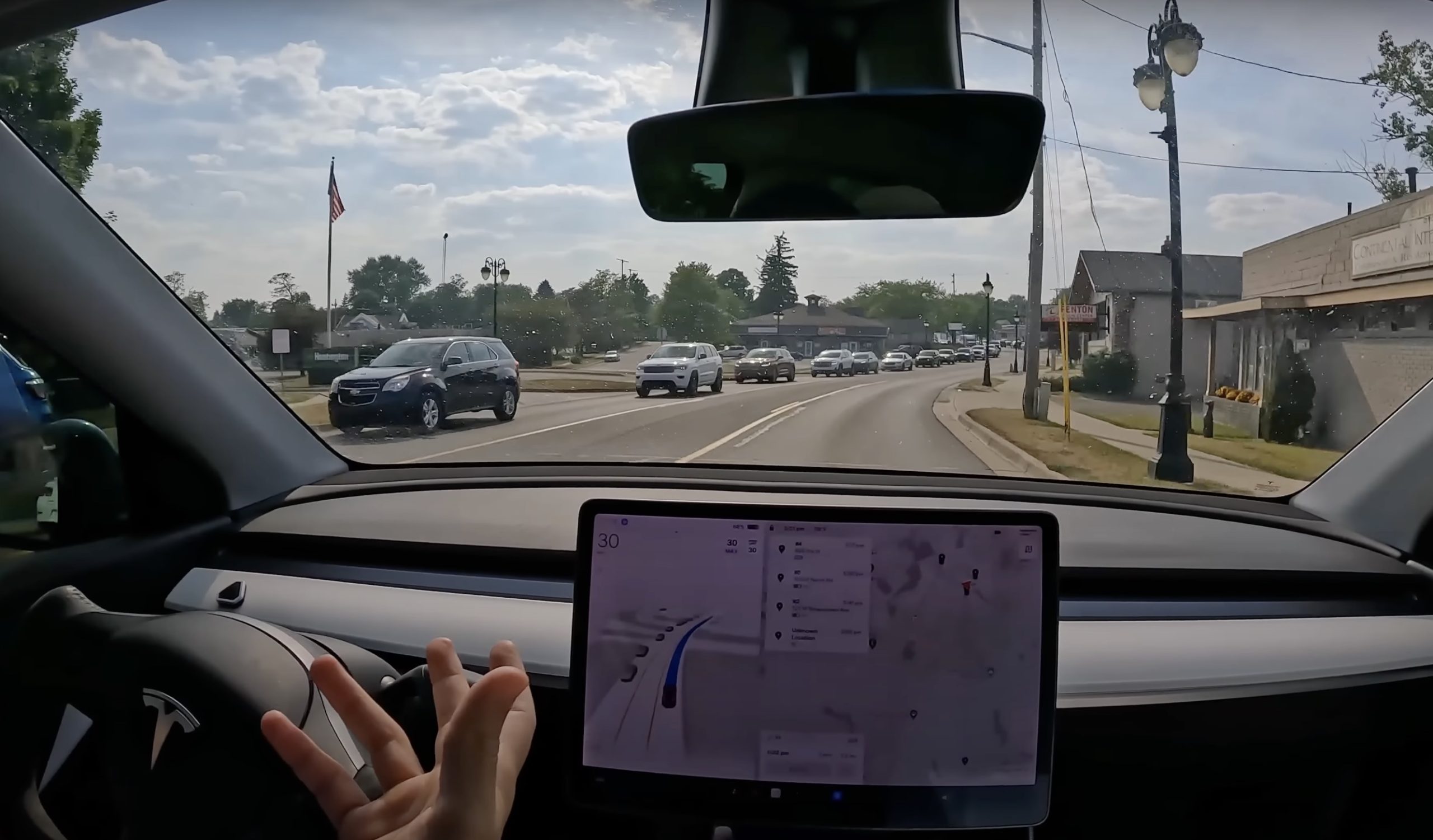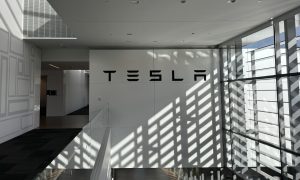

News
Elon Musk says next FSD version to let drivers wear sunglasses
Tesla’s next version of Full Self-Driving (FSD) has been widely discussed in recent weeks, and a new update from CEO Elon Musk over the weekend highlights the fact that it won’t prevent drivers from wearing sunglasses anymore.
The FSD Supervised system uses a driver monitoring feature that makes sure drivers remain attentive and awake, though the system won’t allow the driver to wear sunglasses with the system engaged without nags. In response to one X user complaining about not being able to wear sunglasses while using FSD on Saturday, Musk wrote that the issue would be fixed in v12.5, to which many users in the thread expressed appreciation.
Should be fixed in 12.5
— Elon Musk (@elonmusk) July 21, 2024
Tesla FSD v12.4.1 with no nag starts rolling out to select customers
It’s still not clear exactly when Tesla plans to start deploying FSD Supervised v12.5.
Musk originally said that FSD v12.5 would be out in late June, and many are especially waiting for the update as it’s expected to finally bring FSD Supervised to the Cybertruck. Despite missing the late June target for the release, Musk has highlighted a handful of the other improvements in the version, as well as noting on Thursday that the release was in fact ready to hit the Cybertruck upon its deployment.
He also said this month that FSD Supervised v12.5 will finally merge the city and highway software stacks, as was previously done with v11, though it was apparently rolled back at some point with the arrival of v12.
Tesla started rolling out FSD Supervised v12.4.3 to some customers earlier this month, after previous versions had been delayed due to an extremely low level of interventions—and after the company essentially halted the rollout of v12.4.2.
Musk highlighted the issue of low interventions earlier this month.
The amount of testing time it takes to figure out if the new AI is better than the existing AI as measured by miles between interventions is the limiting factor on progress.
The better FSD gets the longer it takes to find interventions.
— Elon Musk (@elonmusk) July 12, 2024
He also detailed the problem during Tesla’s Annual Shareholder Meeting last month, explaining that the fewer interventions there are, the more difficult it becomes to test versions and point versions against each other to see which ones are performing best.
“And then, like I was saying earlier, it actually gets, as the system gets better, it gets harder to figure out which AI model is better, because now you know, like, ‘Okay, it’s thousands of miles between interventions.’
“How do we, as quickly as possible, figure out which AI model is better. And when you make these different AI models, they’re obviously not like super deterministic, so we have a new model that eliminates one problem but creates another problem. So we’re trying to solve this by a combination of simulation, uploading models, having them run in Shadow Mode.
“It’s actually kind of helpful that not everyone has Full Self-Driving, because we can see, we can run it in Shadow Mode and see, ‘What would this new model have done compared to what the user did?’
“So since we’ve got, you know, millions of cars that we can do this with, that gives us a delta between what the AI model predicted would do and the user would do. And if you kind of sum up the errors between them, you can see ‘Oh, there was a bigger error stack from this model versus that model,’ when you uploaded them into, each uploaded them into 100,000 cars.
“But that’s the biggest limiter right now. It’s not training, it’s not data, it’s actually testing the AI models. And then figuring out clever ways to figure out if a new model is better or not. Like there were sort of particular intersections that are difficult.”
RELATED:
Tesla offers owners $1,000 off to upgrade from EAP to FSD in new car
What are your thoughts? Let me know at zach@teslarati.com, find me on X at @zacharyvisconti, or send us tips at tips@teslarati.com.
News
Tesla begins Robotaxi certification push in Arizona: report
Tesla seems serious about expanding its Robotaxi service to several states in the coming months.

Tesla has initiated discussions with Arizona transportation regulators to certify its driverless Robotaxi service in the state, as per a recent report from Bloomberg News. The move follows Tesla’s launch of its Robotaxi pilot program in Austin, Texas, as well as CEO Elon Musk’s recent comments about the service’s expansion in the Bay Area.
The Arizona Department of Transportation confirmed to Bloomberg that Tesla has reached out to begin the certification process for autonomous ride-sharing operations in the state. While details remain limited, the outreach suggests that Tesla is serious about expanding its driverless Robotaxi service to several territories in the coming months.
The Arizona development comes as Tesla prepares to expand its service area in Austin this weekend, as per CEO Elon Musk in a post on X. Musk also stated that Tesla is targeting the San Francisco Bay Area as its next major market, with a potential launch “in a month or two,” pending regulatory approvals.
Tesla first launched its autonomous ride-hailing program on June 22 in Austin with a small fleet of Model Y vehicles, accompanied by a Tesla employee in the passenger seat to monitor safety. While still classified as a test, Musk has said the program will expand to about 1,000 vehicles in the coming months. Tesla will later upgrade its Robotaxi fleet with the Cyercab, a two-seater that is designed without a steering wheel.
Sightings of Cybercab castings around the Giga Texas complex suggests that Tesla may be ramping the initial trial production of the self-driving two-seater. Tesla, for its part, has noted in the past that volume production of the Cybercab is expected to start sometime next year.
In California, Tesla has already applied for a transportation charter-party carrier permit from the state’s Public Utilities Commission. The company is reportedly taking a phased approach to operating in California, with the Robotaxi service starting with pre-arranged rides for employees in vehicles with safety drivers.
News
Tesla sets November 6 date for 2025 Annual Shareholder Meeting
The automaker announced the date on Thursday in a Form 8-K.

Tesla has scheduled its 2025 annual shareholder meeting for November 6, addressing investor concerns that the company was nearing a legal deadline to hold the event.
The automaker announced the date on Thursday in a Form 8-K submitted to the United States Securities and Exchange Commission (SEC). The company also listed a new proposal submission deadline of July 31 for items to be included in the proxy statement.
Tesla’s announcement followed calls from a group of 27 shareholders, including the leaders of large public pension funds, which urged Tesla’s board to formally set the meeting date, as noted in a report from The Wall Street Journal.
The group noted that under Texas law, where Tesla is now incorporated, companies must hold annual meetings within 13 months of the last one if requested by shareholders. Tesla’s previous annual shareholder meeting was held on June 13, 2024, which placed the July 13 deadline in focus.
Tesla originally stated in its 2024 annual report that it would file its proxy statement by the end of April. However, an amended filing on April 30 indicated that the Board of Directors had not yet finalized a meeting date, at least at the time.
The April filing also confirmed that Tesla’s board had formed a special committee to evaluate certain matters related to CEO Elon Musk’s compensation plan. Musk’s CEO performance award remains at the center of a lengthy legal dispute in Delaware, Tesla’s former state of incorporation.
Due to the aftermath of Musk’s legal dispute about his compensation plan in Delaware, he has not been paid for his work at Tesla for several years. Musk, for his part, has noted that he is more concerned about his voting stake in Tesla than his actual salary.
At last year’s annual meeting, TSLA shareholders voted to reapprove Elon Musk’s compensation plan and ratified Tesla’s decision to relocate its legal domicile from Delaware to Texas.
Elon Musk
Grok coming to Tesla vehicles next week “at the latest:” Elon Musk
Grok’s rollout to Tesla vehicles is expected to begin next week at the latest.

Elon Musk announced on Thursday that Grok, the large language model developed by his startup xAI, will soon be available in Tesla vehicles. Grok’s rollout to Tesla vehicles is expected to begin next week at the latest, further deepening the ties between the two Elon Musk-led companies.
Tesla–xAI synergy
Musk confirmed the news on X shortly after livestreaming the release of Grok 4, xAI’s latest large language model. “Grok is coming to Tesla vehicles very soon. Next week at the latest,” Musk wrote in a post on social media platform X.
During the livestream, Musk and several members of the xAI team highlighted several upgrades to Grok 4’s voice capabilities and performance metrics, positioning the LLM as competitive with top-tier models from OpenAI and Google.
The in-vehicle integration of Grok marks a new chapter in Tesla’s AI development. While Tesla has long relied on in-house systems for autonomous driving and energy optimization, Grok’s integration would introduce conversational AI directly into its vehicles’ user experience. This integration could potentially improve customer interaction inside Tesla vehicles.
xAI and Tesla’s collaborative footprint
Grok’s upcoming rollout to Tesla vehicles adds to a growing business relationship between Tesla and xAI. Earlier this year, Tesla disclosed that it generated $198.3 million in revenue from commercial, consulting, and support agreements with xAI, as noted in a report from Bloomberg News. A large portion of that amount, however, came from the sale of Megapack energy storage systems to the artificial intelligence startup.
In July 2023, Musk polled X users about whether Tesla should invest $5 billion in xAI. While no formal investment has been made so far, 68% of poll participants voted yes, and Musk has since stated that the idea would be discussed with Tesla’s board.
-

 Elon Musk1 week ago
Elon Musk1 week agoTesla investors will be shocked by Jim Cramer’s latest assessment
-

 Elon Musk3 days ago
Elon Musk3 days agoElon Musk confirms Grok 4 launch on July 9 with livestream event
-

 Elon Musk16 hours ago
Elon Musk16 hours agoxAI launches Grok 4 with new $300/month SuperGrok Heavy subscription
-

 News7 days ago
News7 days agoTesla Model 3 ranks as the safest new car in Europe for 2025, per Euro NCAP tests
-

 Elon Musk2 weeks ago
Elon Musk2 weeks agoA Tesla just delivered itself to a customer autonomously, Elon Musk confirms
-

 Elon Musk1 week ago
Elon Musk1 week agoxAI’s Memphis data center receives air permit despite community criticism
-

 Elon Musk2 weeks ago
Elon Musk2 weeks agoTesla’s Omead Afshar, known as Elon Musk’s right-hand man, leaves company: reports
-

 News2 weeks ago
News2 weeks agoXiaomi CEO congratulates Tesla on first FSD delivery: “We have to continue learning!”
















